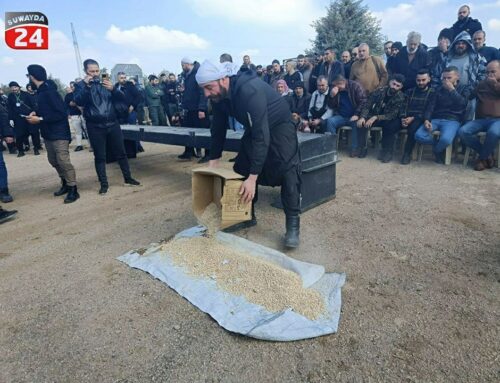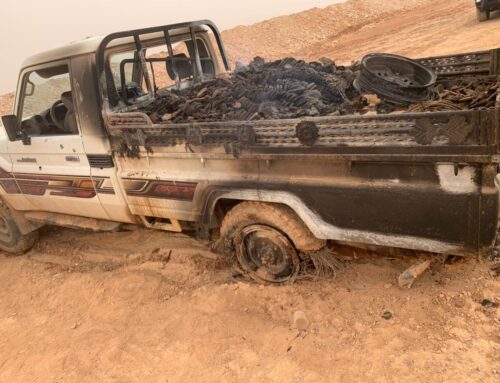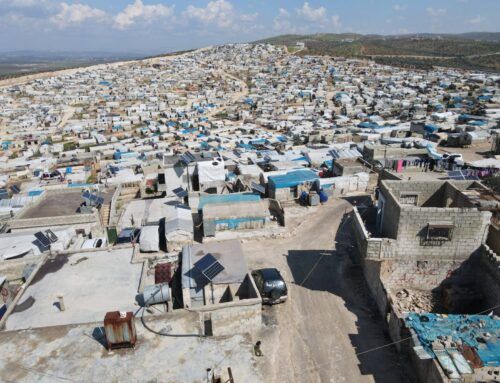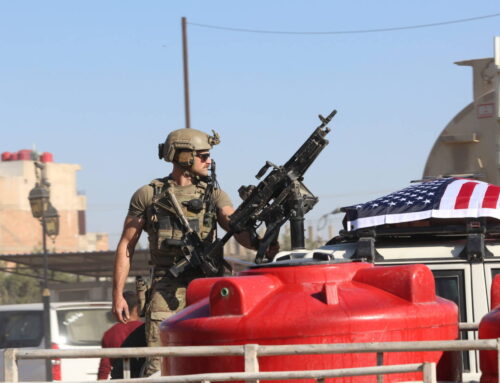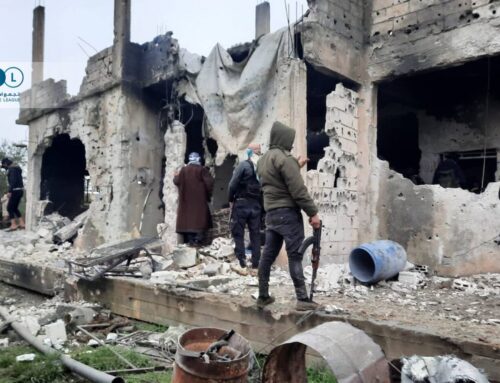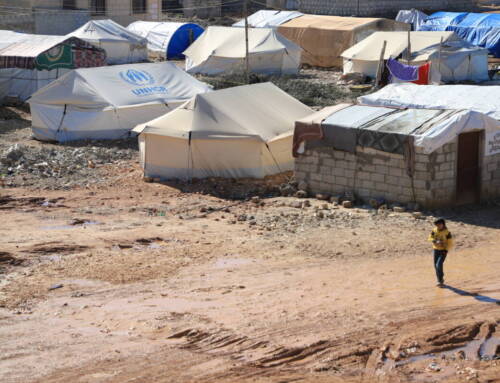After 6 months of waiting, aid delivery to besieged Damascus suburbs only enough for a few days
A convoy of 51 Syrian Arab Red Crescent (SARC) trucks […]
3 May 2017
A convoy of 51 Syrian Arab Red Crescent (SARC) trucks carrying UN humanitarian assistance entered besieged, rebel-held East Ghouta on Tuesday night.
The aid delivery—received in Ghouta’s de facto capital of Douma—was the first since October 19.
The entry of humanitarian assistance comes one week after Stephen O’Brien, the UN’s Under-Secretary-General for Humanitarian Affairs and Emergency Relief, said he was “gravely concerned” about the situation in East Ghouta in a statement to the Security Council.
“Civilians remained trapped amid reports of relentless shelling, airstrikes and ground fighting,” he said in his statement.
“The last informal access routes have reportedly been closed further restricting movement for the some 400,000 people who live in the area,” added the UN official.
Syrian regime forces besieged the Ghouta suburbs east of Damascus in 2013. However, food and other essentials continued to pass into the encircled enclave through a network of rebel-built tunnels.
This past February, pro-government forces blockaded the eastern Damascus neighborhoods north of East Ghouta that served as an entry point for smuggled goods. Then, in March, the regime closed the al-Wafideen crossing, a checkpoint near Douma that allowed for foodstuffs and supplies to enter the rebel pocket.
After weeks under an intensified regime siege, Tuesday’s aid delivery was “critical,” Khalid Aybour, head of the Douma Local Council, tells Syria Direct’s Alaa Nassar.
But Aybour says the humanitarian assistance is nowhere near the amount needed to sustain the residents of East Ghouta and will last “only for a few days.”
Q: What exactly entered East Ghouta on Tuesday? Did the local council coordinate with humanitarian organizations for the entry of the aid convoy?
A delegation from the Syrian Arab Red Crescent [SARC] entered last night at 11:00pm along with a United Nations convoy. We unloaded the goods into the local council’s warehouses.
The convoy was composed of 51 trucks: six with medical supplies, two with school supplies and the remaining trucks carrying about 7,000 food parcels.
The convoy didn’t contain anything else—no fuel whatsoever.
The Douma Local Council coordinated entry of the aid on [Tuesday] with the United Nations and the SARC branch in Douma, as it has with previous deliveries.
Q: Could you speak to the importance of this aid convoy at a time when East Ghouta is under a tightened siege and rival factions are battling one another? Is the aid enough to meet the needs of East Ghouta’s 400,000 residents?
It was critical that assistance enter now. But as I see it, this is an embarrassment for the Douma Local Council considering the meager amount of aid.
The supplies are only enough for a few days. There isn’t even enough for the city of Douma alone—the aid will total 7,000 meals for the 25,000 thousand families in the city.
The regime is just trying to aggravate the infighting between rebel factions with the timing of this aid delivery.
[Ed.: Douma, East Ghouta’s de facto capital, is the base of operations for Jaish al-Islam, a rebel faction that largely dominates the besieged enclave militarily and politically. Since Friday, Jaish al-Islam has clashed with rival factions Failaq a-Rahman and Hay’at Tahrir a-Sham, whose influence is contained to a southwestern pocket of the East Ghouta suburbs.]
We, the local council, are working to share these meals [food parcels] with the people of East Ghouta in other towns in coordination with local councils across East Ghouta. Douma will take a share of the meals, with the rest going to other parts of East Ghouta.
[Ed.: Syria Direct spoke with Khaled a-Rifai, a member of the local council in the East Ghouta town of Arbin on Wednesday. He confirmed that his town’s local council is “coordinating allotment and vehicles” for the distribution of aid in conjunction with the Douma Local Council. He added that the distribution will take “several days to complete.”]The people have been waiting for this assistance for a while, and, sadly, it has been more than seven months since the last aid convoy entered East Ghouta. I think that sharing the meals with the rest of the towns in Ghouta will relieve some tension and allow for solidarity among residents.
Q: To what extent will Ghouta residents benefit from the aid delivery, particularly after regime forces intensified their siege?
An aid delivery at a time like this will have a positive impact. For one thing, it means traders—who’ve monopolized and raised the price of food and supplies—will see from this aid delivery that East Ghouta is not completely closed off. Just the rumors about the aid that entered Tuesday meant lower prices for goods in the market, though it might only be temporary.
Q: Are there any aid deliveries to East Ghouta planned for the upcoming days?
There aren’t any promises. [SARC and UN representatives] told us that it wasn’t easy to obtain authorization from the regime.


